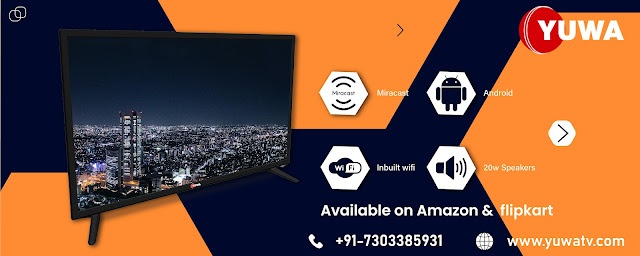LATEST INNOVATIONS IN SMART TV: LED TV COMPANIES IN INDIA
Smart
TVs have become the new standard (along with the pandemic, of course). This
massive market of carving the best smart TV in India is now valued at over
$109 billion globally. Statistics like these should come as no surprise to the
top LED
TV Companies in India, given that more than 90% of households
(respectively) own a television. And, with many governments around the world
enforcing stay-at-home orders this year, television firms have a captive
market. Because the pandemic has no clear end in sight, the present increase in
internet viewing—up 31% in the market, for example—shows no indications of
slowing down, and we should expect sales to remain strong for the foreseeable
future by the LED TV Manufacturers. Consumers
will be yearning for smart TV innovation as a result of all that time spent in
front of the screen.
In recent years, the
television technology landscape has changed dramatically. A plethora of
technologies have evolved, ranging from OLEDs to QLEDs, webOS to Android OS, 4K
to 8K, further confusing the decision to purchase a smart TV. Users may now
watch what they want when they want, and how they want thanks to the TV
Manufacturers in India. We'll look at what made this feasible in this
post. We'll also learn how the experience of TV viewing has evolved
dramatically in recent years, thanks to innovations led by LED
TV Companies in India.
Smart
TV Innovations by LED TV Manufactures
#1
HDR Programming
The
first of our smart TV advancements by the LED TV Manufacturers is that
devices with High Dynamic Spectrum (HDR) programming can broadcast video
content with a greater range of colors and highlights than regular televisions.
Consumers will need the correct screen to take advantage of HDR, as with the
newest streaming technologies, thus demand for HDR-enabled smart TVs will
likely continue to rise in enticing the best smart TV in India.
HDR-compatible
online smart LED TV must have a
unique backlight system capable of generating a brightness greater than or
equal to 1,000 units in order to produce a richer picture. Standard definition
range (SDR) televisions of smart LED TV Manufacturers, on the other
hand, can only produce up to 100 nits.
#2
High-End Visual, introducing 8K
The
maximum resolution that digital screens can support is always growing. The
image will be more alive and vivid if there are more distinct pixels that can
be presented horizontally and vertically. The current range of high definition
devices includes 720p HD (1280 vertical scan lines x 720 horizontal scan
lines), 1080p HD (1920 x 1080), and the current ultra-high definition (UHDTV)
standard, which is commonly referred to as "4K" – a catchall term for
any resolution with around 4000 horizontal pixels.
Most
scientists and doctors agree that 8K resolution pixels count is roughly equal
to what a human eye can perceive, hence 8K may be the resolution at which that
limit has been passed by the LED TV Manufacturers.
#3
High Refresh Rates
The
number of frames an online smart LED TV
can display per second, measured in Hertz, is known as the refresh rate (unit
of frequency). A TV with a refresh rate of 50 Hz, for example, will display 50
images per second.
Motion
rate is one of the most critical elements on a TV spec sheet, but it gets
little attention. LED TV Manufacturers can use this
obscurity to hide accurate figures or even fabricate data. The majority of
television makers exaggerate refresh rates with fancy names and overblown
figures to entice the best smart TV in India.





Comments
Post a Comment